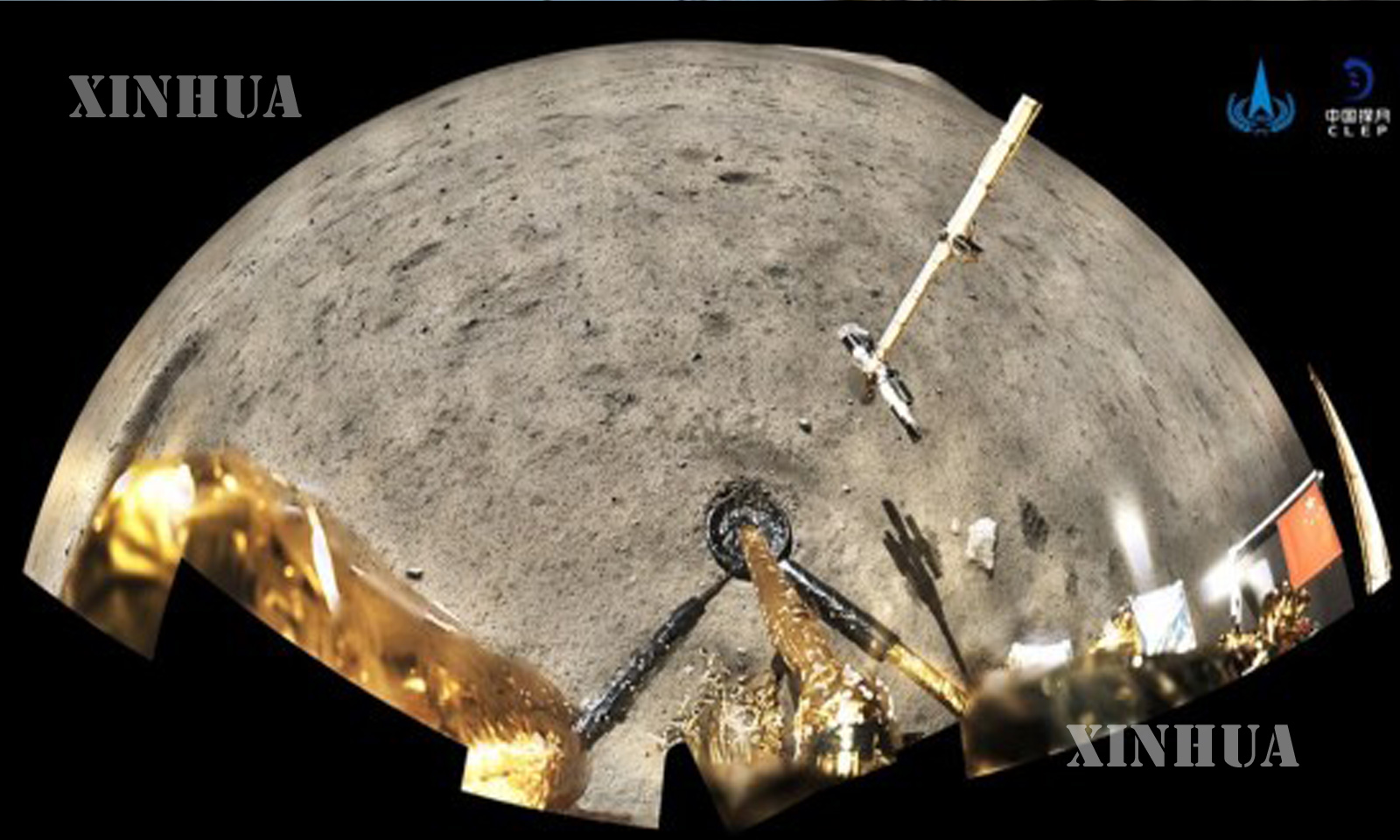China
၂၀၃၀ မတိုင်မီ တရုတ်နိုင်ငံက လကမ္ဘာသို့ လူသား စေလွှတ်နိုင်ဖွယ်ရှိကြောင်း သိပ္ပံပညာရှင် ပြောကြား

ပေကျင်း ၊ ဒီဇင်ဘာ ၆ ရက်(ဆင်ဟွာ)
၂၀၃၀ ပြည့်နှစ် မတိုင်မီ လမျက်နှာပြင်ပေါ်သို့ လူသား(အာကာသယာဉ်မှူး)တစ်ဦး ဆင်းသက်ခြေချနိုင်ရေး စေလွှတ်ရန်မှာ တရုတ်နိုင်ငံအတွက် “ လုံးဝဖြစ်နိုင်ဖွယ် ” ရှိကြောင်း အာကာသစူးစမ်းလေ့လာရေးဆိုင်ရာ တရုတ်နိုင်ငံ၏ အဆင့်မြင့်သိပ္ပံပညာရှင်တစ်ဦးက ထုတ်ဖော်ပြောကြားခဲ့သည်။
“ ကျွန်တော့်ပုဂ္ဂိုလ်ရေးထင်မြင်ယူဆချက်ပါ ၊ လမျက်နှာပြင်ပေါ် လူသားဆင်းသက်ခြေချဖို့ သိပ္ပံဆိုင်ရာ သုတေသနလုပ်ငန်းတွေ ဆက်လက်လုပ်ဆောင်နေသရွေ့ ၊ (လကမ္ဘာသို့ လူသားစေလွှတ်ခြင်း ရည်မှန်းချက်ပန်းတိုင်) ကို တရုတ်နိုင်ငံက ခိုင်မာစွာ ဆုံးဖြတ်ထားသရွေ့ ၂၀၃၀ ပြည့်နှစ်မတိုင်ခင်မှာ လမျက်နှာပြင်ပေါ် လူသားဆင်းသက်ခြေချဖို့ တရုတ်နိုင်ငံအတွက် လုံးဝ ဖြစ်နိုင်ဖွယ်ရှိပါတယ်” ဟု မကြာခင်က CCTV ရုပ်သံလိုင်း၏ တွေ့ဆုံမေးမြန်းမှုတွင် သိပ္ပံပညာရှင် Ye Peijian က ထည့်သွင်းပြောကြားခဲ့သည်။
တရုတ်နိုင်ငံ၏ ပထမဆုံးလမျက်နှာပြင်ဆင်းသက်ယာဉ် Chang’e-1 ၏ ပုံစံထုတ်အင်ဂျင်နီယာချုပ် နှင့် တရုတ်နိုင်ငံ သိပ္ပံအကယ်ဒမီ၏ ထိပ်တန်း ပညာရှင်တစ်ဦးဖြစ်သူ Ye က အာကာသစူးစမ်းရှာဖွေရေးသည် သိပ္ပံဆိုင်ရာ ကိစ္စရပ်တစ်ခုတည်းသာမဟုတ်ဘဲ နိုင်ငံ၏ အနာဂတ်နှင့်လည်း တစ်စုံတစ်ရာဆက်နွယ်မှုရှိကြောင်း မှတ်ချက်ပြုခဲ့သည်။
“ အာကာသနည်းပညာမှာ ဦးဆောင်ဦးရွက်ပြုတဲ့ နိုင်ငံတွေဟာ အခြားနယ်ပယ်အမျိုးမျိုးမှာ နည်းပညာရပ်ဆိုင်ရာ ခေတ်ရှေ့ပြေးနေကြပြီးသားပါ ၊ အပြန်အလှန်ပေါ့ အာကာသနည်းပညာဟာ အခြားသော နယ်ပယ်တွေက နည်းပညာရပ်တွေကို တစ်စုံတစ်ရာ အထောက်အကူပြုပေးနိုင်ပါတယ်” ဟု Ye က ဖြည့်စွက်ပြောကြားခဲ့သည်။
ပြီးခဲ့သောနှစ်တွင် တရုတ်နိုင်ငံ၏ Chang’e-5 လမျက်နှာပြင်ဆင်းသက်ခရီးစဉ်အတွင်း လမျက်နှာပြင်ပေါ်မှ နမူနာပေါင်း အလေးချိန် ၁,၇၃၁ ဂရမ်ကို စုဆောင်းသယ်ဆောင်လာပေးရာ ယင်းမှာ နှစ်ပေါင်း ၄၀ ကျော်ကာလအတွင်း ပထမဆုံး အကြိမ် လမျက်နှာပြင်နမူနာကို စုဆောင်းသယ်ဆောင်ခဲ့ခြင်းဖြစ်သည်။
အဆိုပါ လမျက်နှာပြင် နမူနာပစ္စည်းများအား ခွဲခြမ်းစိတ်ဖြာလေ့လာခဲ့ပြီးနောက်တွင် တရုတ်နိုင်ငံသုတေသနပညာရှင်များသည် လွန်ခဲ့သော နှစ်ပေါင်း ၂ ဘီလီယံခန့်က အသေးငယ်ဆုံး လမျက်နှာပြင်ကျောက်သား၏ သက်တမ်းကို ထုတ်ပြန်ကြေညာနိုင်ခဲ့ပြီး လမျက်နှာပြင် မီးတောင်ပေါက်ကွဲမှု ကာလသက်တမ်းအား ယခင်က သိရှိထားသည်ထက် နှစ်သန်းပေါင်း ၈၀၀-၉၀၀ ခန့်ပိုမိုကြာရှည်ခဲ့ကြောင်းကို ဖော်ထုတ်နိုင်ခဲ့သည်။
လသမိုင်းကြောင်းအား စူးစမ်းရှာဖွေခဲ့ခြင်းသည် နိုင်ငံတကာအသိုက်အဝန်းတွင် ၎င်း၏ တည်ရှိမှုအား မြှင့်တင်ရန် တရုတ်နိုင်ငံ အားထုတ်မှု၏ နောက်ဆုံး နမူနာဖြစ်ကြောင်း Ye က ဆိုသည်။
လကမ္ဘာ နှင့် အင်္ဂြိုဟ် ခရီးစဉ်များ စေလွှတ်ခဲ့ပြီးနောက် တရုတ်နိုင်ငံ၏ နောက်ထပ် အာကာသစူးစမ်းလေ့လာရေး ပစ်မှတ်မှာ ဂြိုဟ်ငယ်တစ်လုံးလေ့လာရေးဖြစ်နိုင်ကြောင်း ၊ သူ့အဖွဲ့အနေဖြင့် ဂြိုဟ်သိမ်ဂြိုဟ်မွှား စူးစမ်းလေ့လာရေးအတွက် စတင်လုပ်ဆောင်နေပြီဖြစ်ကြောင်း Ye က ဖြည့်စွက်ပြောကြားခဲ့သည်။ (Xinhua)
————————————
(English Version)
China’s manned moon landing possible before 2030: scientist
BEIJING, Dec. 6 (Xinhua) — It is “entirely possible” for China to perform a crewed lunar landing before 2030, said a senior Chinese scientist in deep-space exploration.
“I personally think that as long as the technological research for manned moon landing continues, and as long as the country is determined (to achieve the goal), it is entirely possible for China to land people on the moon before 2030, ” Ye Peijian said in a recent interview with the state broadcaster CCTV.
Chief designer of China’s first moon probe Chang’e-1 and an academician of the Chinese Academy of Sciences, Ye noted that space exploration is not just a matter of science, but also something related to the future of a nation.
“Countries that can lead in space technology have advanced technologies in various fields. In turn, space technology is something that can feed back to technologies in other aspects,” Ye added.
Last year, China’s Chang’e-5 mission retrieved moon samples weighing about 1,731 grams, which were the first lunar samples in the world in over 40 years.
After analyzing the lunar samples, Chinese researchers in October announced that they have dated the youngest moon rock at around 2 billion years in age, extending the “life” of lunar volcanism 800-900 million years longer than previously known.
Ye said the discovery on moon history was the latest example of China’s efforts to improve its status in the international community.
After the moon and Mars, China’s next target in deep-space exploration could be an asteroid mission, Ye said, adding that his team had already been working on the asteroid research.
Photo – Image released by the China National Space Administration (CNSA) on Dec. 4, 2020 shows China’s national flag unfurled from the Chang’e-5 probe on the moon. (CNSA/Handout via Xinhua)






